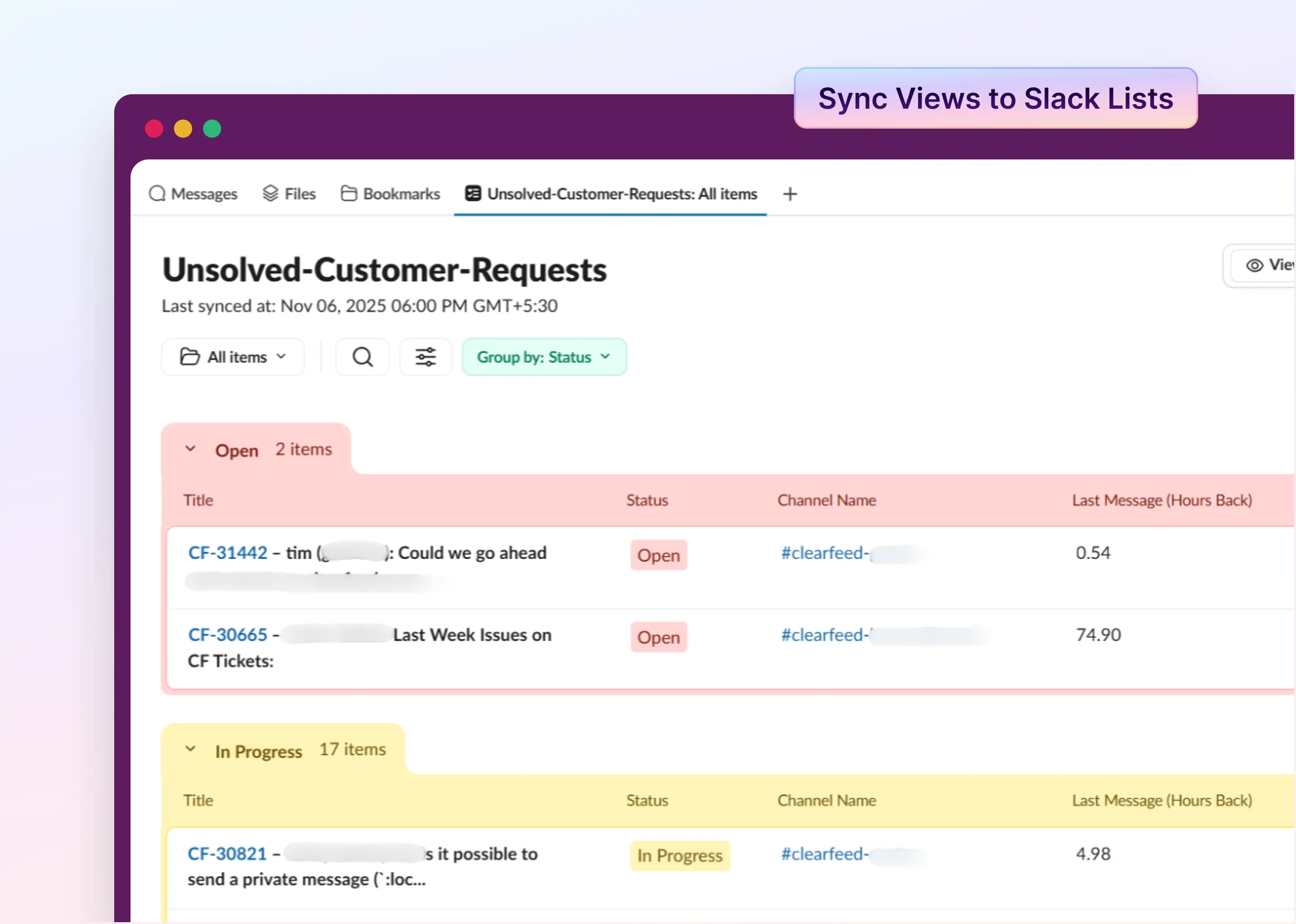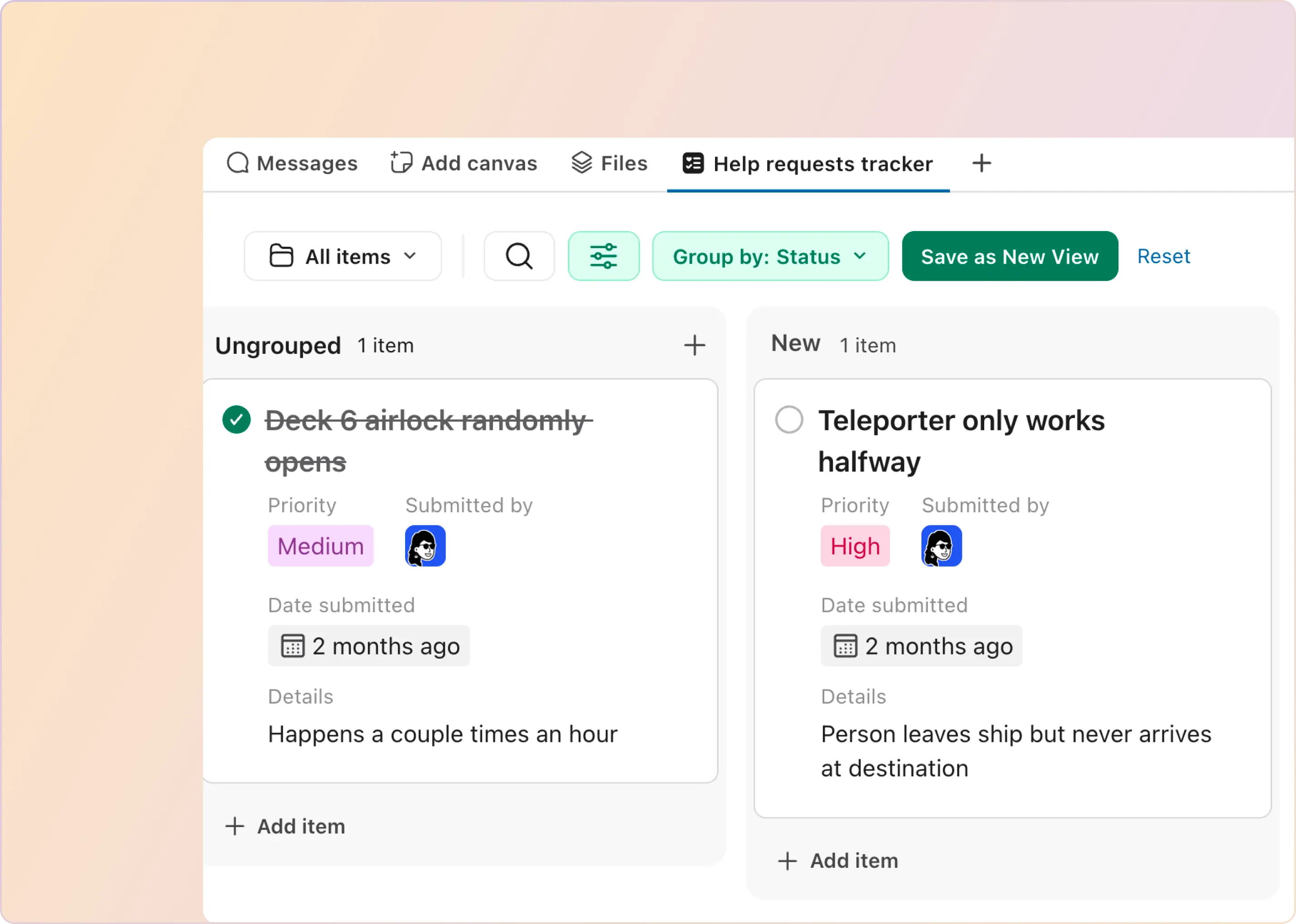Support teams are often at the epicenter of challenging scenarios — handling dissatisfied customers, switching multiple channels, and addressing urgent issues from internal teams. With an endless stream of queries in the queue, Slack channels can become inundated with conversations and requests, making it arduous to identify and prioritize critical customer needs.
Despite these challenges, support teams must remain informed and coordinated to deliver exemplary experiences. One effective solution to these obstacles is triage tickets, a powerful approach to managing Slack-based support incidents.
So, what exactly does triage encompass? How is it implemented? What are its advantages? In this informative article, we will guide you through the ins and outs of triage in Slack and explain why this method is invaluable for support success.
What Is a Ticket Triage?
A ticket triage refers to prioritizing, sorting, and assigning incoming support or issue tickets based on their urgency, importance, and impact. This helps ensure that critical issues are addressed first and resources are utilized efficiently. It typically involves:
- Evaluating submitted tickets according to established criteria (severity, affected users, etc.)
- Assigning each ticket a priority level (e.g., low, medium, or high)
- Assigning the ticket to the best-suited team member or department
- Communicating progress, updates, or relevant information between teams as needed
How to Triage Support Tickets in Slack?
The ticket triage process in Slack is easy to use. However, it might take some time to familiarize yourself with the process if you are a new user. The guided walk-through below will make the process easier.
- Assigning Triage Channels: Slack triage is mostly used for handling software problems, internal helpdesk, and dealing with issues faced by the internal teams. Support teams get started with assigning triage channels by giving an easy-to-understand name. They are easy to identify as they have a #triage- prefix in their title.
- System for Triage Channels: When a triage channel is created, it comes with defined procedures and workflows to guide customer support teams efficiently on where to post issues and how to report problems. Various channels are logically named—like #triage-zendesk or #triage-freshdesk—so it's clear which issues should be directed where.
- Redirecting Incoming Requests: The basic approach to managing a triage channel in Slack involves defining the problem, determining its severity, and attempting a prompt fix if possible. If the problem is complex, it gets escalated to the team responsible for fixing software bugs.
- Use of Emojis for Action Indication: Slack offers a system of emojis to communicate a request's status effectively. For instance, a red circle emoji indicates the task's urgency, while a check mark indicates the issue has been solved.

- Use of Custom App for Operational Efficiency: With Slack’s built-in tools and bots, the triage system makes message tracking easier. For example, the triage bot watches all triage channels for color and dot emoji associated with a message and keeps track of missing reactions or resolved issues.

- Regular Status Updates: The "triage-bot" periodically collates and summarizes how many requests or issues in triage channels remain unsolved and nudges the support teams to address unresolved issues.

7 Reasons Why You Should Use Triage Channels in Slack
Slack has become invaluable for building better workflows and improving communication between support teams and their customers. Here's why you need to start using the platform to triage support tickets:
- Enhanced Efficiency with Systematic Approach: Slack's structured method for processing and managing requests helps prioritize tasks based on urgency and resource availability. This aids in effective time management and ensures high-priority issues are addressed promptly.
- Improved Organization with Naming Convention: Triage channels are clearly distinguished using the #triage- prefix, and these channels guide team members to direct issues appropriately, fostering better organization.
- Clear Procedures and Workflows: Detailed procedures and predetermined workflows empower support teams, ensuring they know exactly where and how to post and resolve issues, which leads to greater procedural efficiency.
- Easier Onboarding with Pinned Guidelines: Important guidelines pinned to each triage channel provide quick, easy access to information, especially for new team members. This accelerates the onboarding process and helps team members understand triage procedures quickly.
- Visual Severity and Status Indicators: Using unique emojis to indicate issue severity and status makes it easy to identify high-priority requests and track their progress. Visual cues like 🔴 for urgent issues, 👀 for tasks being worked on, and ✅ for completed tasks simplify the tracking process and boost communication clarity.

- Effective Request Redirection: Slack's request management system helps quickly define the problem, assess its urgency, and resolve or escalate it to the appropriate team. This ensures the right people work on the right problems, optimizing problem-solving and customer experience.
- Customized Workflows: Slack's custom app creation capability enhances the flexibility of triage systems. Users can create a "triage-bot" to monitor channels, track request progress, summarize unresolved requests, and send reminders. This automated approach significantly reduces the likelihood of overlooked issues and enables teams to focus on problem-solving rather than manual tracking.
You're probably thinking, "How do I get started with triage? My customers aren’t always happy because I reply to their tickets late." That's why ClearFeed is here today – to help your customers rave about your support experience. Read on to learn more about what we bring for you with our triage feature.
How ClearFeed Brings Triage Channel to Support Teams
ClearFeed's triage channels make it easier for support teams to manage and respond to internal and external requests on Slack. Instead of having conversations with customers and employees scattered across various channels, it introduces a collective space where requests and replies from multiple Slack channels are synced and easily accessible.
Triage channels offer rich integration with multiple enterprise ticketing tools such as Zendesk, Jira, Salesforce Cloud, etc., and optimize the user experience for support teams without intruding on customer Slack channels. This allows for a more collaborative and less transactional support experience.

Related Read: How ClearFeed Streamlines Integration of Zendesk with Slack for Customer Support
Additionally, these channels provide features that enhance productivity and streamline workflows:
- You can set Service Level Agreement (SLA) timers for each customer issue in the triage channels. You'll receive alerts before any potential SLA breach to ensure customer teams uphold their commitment to response times, improving customer satisfaction and reducing the risk of breaching agreed service levels.

- You can send private comments within public triage channels. This means internal discussions can be held without the customer being privy to them. It allows for transparent conversations among team members while maintaining professional customer interaction, fostering better internal collaboration and decision-making.

- Our platform allows for easy lookup of customer requests based on status, assignee, customer, and date. This advanced search capability streamlines issue management, making it easier for customer support teams to identify, follow up, and resolve open requests.
At the end of the day, if you're looking to scale customer support, triage is one of the best ways to do it. This strategy allows you to capture volumes of customer support requests across multiple channels while applying a consistent standard of excellence in all requests.
ClearFeed’s Slack-based conversational platform will help you take your support team from manual, inefficient processes to a high-quality, scalable support organization that scales with your business. If you'd like to get started on your support team, check out https://clearfeed.ai or book a demo with us!
















